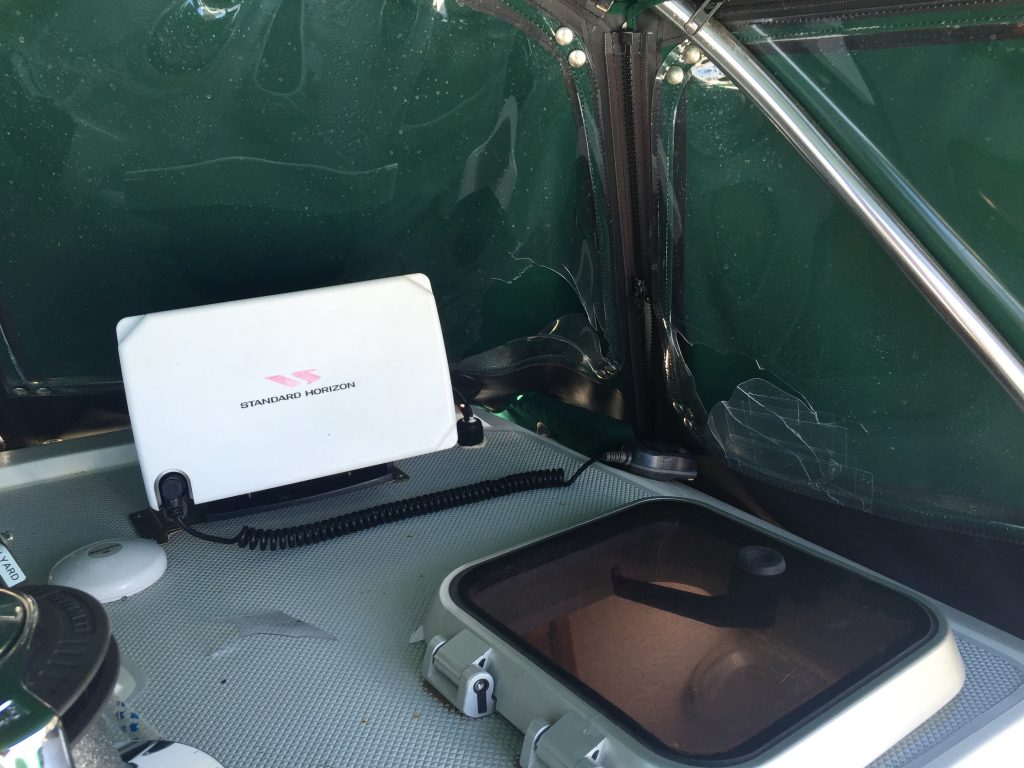…SMALL CRAFT ADVISORY IN EFFECT FROM 3 PM PDT THIS AFTERNOON
THROUGH THIS EVENING…
.TODAY…SW WINDS 10 TO 20 KT…INCREASING TO 15 TO 25 KT IN THE
AFTERNOON.
.TONIGHT…SW WINDS 15 TO 25 KT DECREASING TO 10 TO 20 KT BY
MIDNIGHT.
I copied this weather forecast directly from the weather report for San Francisco Bay this morning. You can pretty much copy and paste it into every day’s forecast between the middle of June and the middle of September, and you won’t be far off. With that in mind, it won’t always be summer, and the forecasts will change. Today might be a good time for you to start learning what tools are available and how to use them. While putting together an email to send to an approaching Advanced Coastal Cruising class, I realized that the information in the message might be of interest to everyone.
These are some links that I use on a regular basis to assist me in deciding if weather conditions are good for sailing. You will notice there is a definite lean towards “outside the gate,” however, the links and information can be used pretty much anywhere. Some of these are already on the Tradewinds site, and you may have already found them. Some of the other links are not.
- http://marine.weather.gov/MapClick.php?w0=t&w1=td&w3=sfcwind&w3u=0&w10=swlp&w11=swlm&w12=swlp2&w13=swlm2&w14=wwh&w15=wvh&AheadHour=0&Submit=Submit&FcstType=graphical&textField1=37.7632&textField2=-122.5852&site=all&unit=0&dd=&bw=&marine=1
This is a point forecast provided in graph form. It is very readable, and the weather elements you show can be changed to suit your needs. This graph shows something called significant wave height (SWH). It is an estimate of the average of the biggest 1/3 of the waves that are expected. Combined seas tells you the biggest waves to expect, while (SWH) lets you know what you will be “hit with” on a regular basis. In other words, how comfortable will the waves be. I use (SWH) in my go/no go decision making. When the (SWH) is equal to or greater than the period, I don’t go. For example, a (SWH) of six feet isn’t bad, however, if those waves are coming at a six second period, it gets very uncomfortable and I don’t recommend going. I checked this forecast a couple of days ago. The combined heights of the wind waves, primary swell, and secondary swell was 8 feet. The period was 9 seconds. Both within Tradewinds policy. The SWH was 5 feet at 9 seconds. Well within my personal go/no go standard. I also noticed that the Temperature and Dew point lines touched in a few places, which indicates a small potential for fog. I have this link set for 8 miles outside the gate. You can change it by changing the Lat/Lon in the web address. - http://forecast.weather.gov/shmrn.php?mz=pzz545&syn=pzz500
Very good, very easy to read five day forecast of weather and sea state in the area off the Golden Gate, out to 10 miles, shown in simple text. - http://www.opc.ncep.noaa.gov/P_e_sfc_color.png
This is a surface analysis for the eastern pacific. Learn to read it and you will never regret it. Here is a link to a YouTube video that does a pretty good job of describing the info found on a surface analysis; https://www.youtube.com/watch?v=C9AfqznSwk4 . One thing the video doesn’t mention is that generally, the closer together the isobar lines, the harder the wind is blowing. - http://www.opc.ncep.noaa.gov/shtml/irp1.gif
Wind and wave analysis - http://cdip.ucsd.edu/?nav=recent&sub=nowcast&xitem=sf
This is a very understandable (a picture with lots of colors) of the expected swell - http://www.ndbc.noaa.gov/station_page.php?station=46026
The most recent data available regarding conditions at the San Francisco weather buoy, 18 miles off shore from San Francisco. This link also includes historical data of conditions at that buoy.




